The COVID-19 pandemic highlighted the vital role of public health labs, with scientists at New York’s Wadsworth Laboratory among the first to isolate and sequence the virus’s genome, develop rapid diagnostics and investigate the effectiveness of treatments. More than 100 U.S. public health labs perform this vital work to protect our communities, often collaborating with agencies like the Centers for Disease Control and Prevention (CDC).
Despite their importance, many public health labs still operate in outdated buildings that hinder their ability to use the most high-tech equipment and conduct sophisticated procedures. Though legislation has expanded their responsibilities—from testing cannabis products to screening newborns for genetic disorders and conducting wastewater surveillance—the lab infrastructure just hasn’t kept pace.
The good news is we’re experiencing a fast-moving evolution toward more modern, adaptable spaces that better support the mission of these labs to protect and improve public health. The CDC has also boosted funding to enhance these labs’ genome sequencing capabilities, improving the ability of researchers to diagnose illnesses, track disease outbreaks and develop new drugs. Public health labs need enough space to accommodate the equipment and infrastructure required to handle the vast amount of data generated by sequencing.

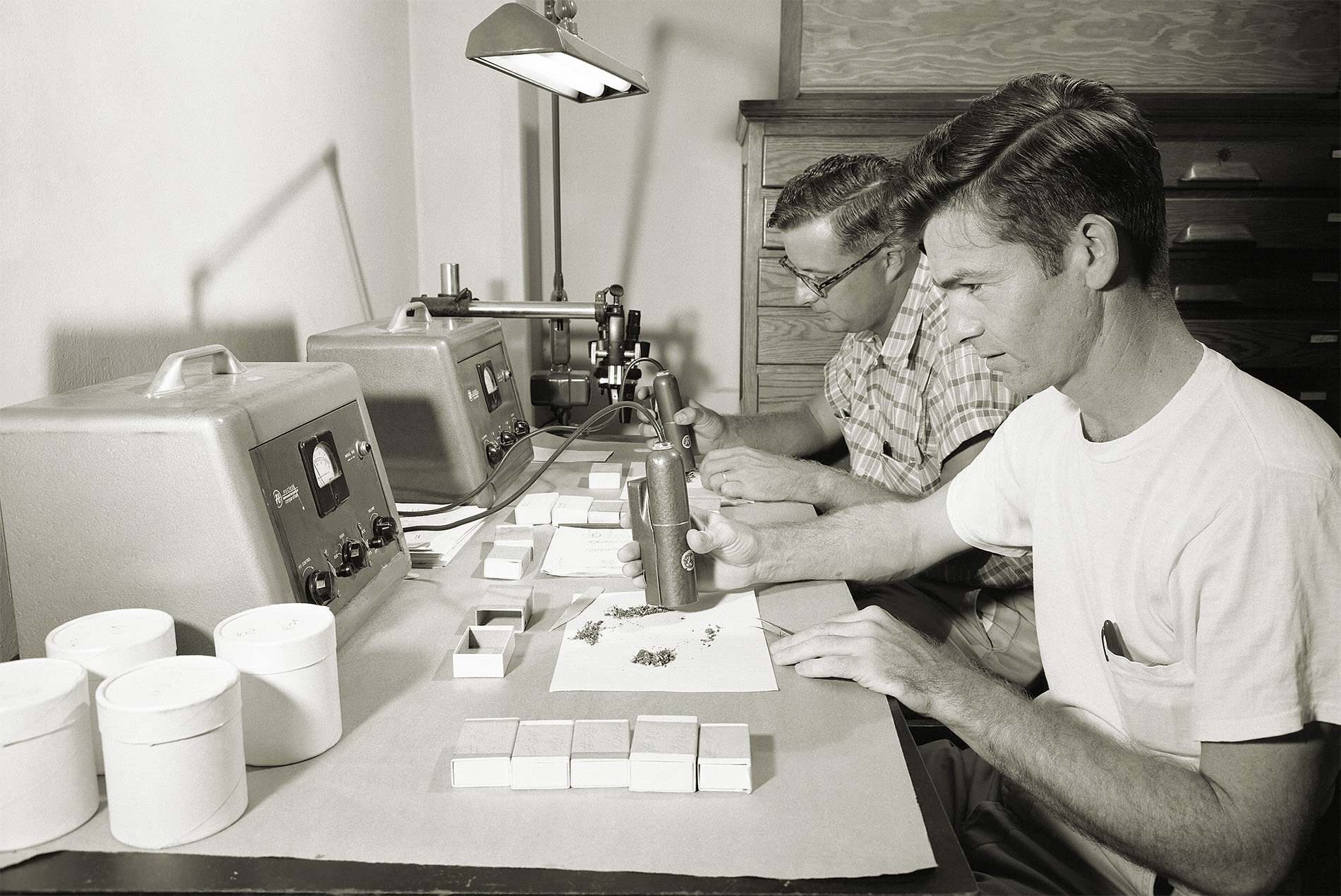
Then vs. Now: Public health labs have come a long way in 70 years.
(circa-1955 images above from the CDC Public Health Image Library)
Modernizing Public Health Labs

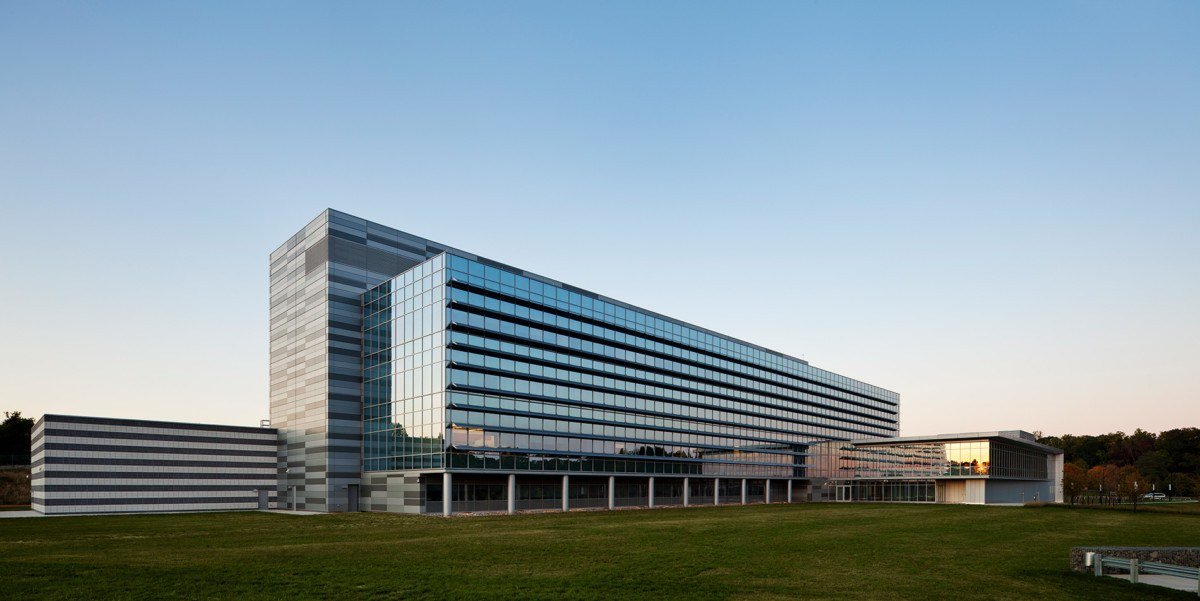
Numerous federal and state government entities are making significant investments to create new or renovated public health facilities.
Over a decade ago, HOK designed the Consolidated Forensic Laboratory in Washington, D.C. (above left), and the New Jersey Public Health, Environmental and Agricultural Laboratory (above right) in West Trenton. We’re currently leading the design of state public health labs in New York and Rhode Island, and a research-focused building for the National Institutes of Health (NIH) in Bethesda, Maryland.
New York Public Health Laboratory
HOK is part of a joint venture with Gilbane Building Company and Turner Construction Company to design and build a new $1.7 billion New York Public Health Laboratory on the Harriman State Office Campus Complex in Albany. This project will consolidate the operations of the Wadsworth Center, the largest and most diverse state public health lab in the U.S., into one modern facility by 2030.
The Wadsworth Center has been a leader in combating infectious diseases since 1901. Researchers here focus on public health concerns including responding to threats, studying emerging infections, analyzing environmental exposures, and licensing clinical and environmental labs. With the 2023 appointment of Dr. Leonard Peruski, an expert in global public health, as its new director, the Wadsworth Center is poised to further its vital work in areas like COVID-19 and polio wastewater surveillance.
The increased investment in public health infrastructure and leadership will help shape the future of public health in New York while serving as a model for the nation.
Rhode Island Public Health Laboratory
In Providence, HOK is designing the new Rhode Island Public Health Laboratory, a 212,000-sq.-ft. center for innovation scheduled to open in 2025. This facility will house the state’s new health lab, life sciences labs for Brown University and space for the burgeoning biotechnology sector in the state’s Innovation and Design District.
Equipped with a Biosafety Level 3 facility, the lab will provide critical services for various infectious diseases, environmental and forensic testing needs. This modernized space will allow the State Health Laboratory to be more agile in responding to emerging threats and applying new technologies, particularly in the field of genome sequencing.
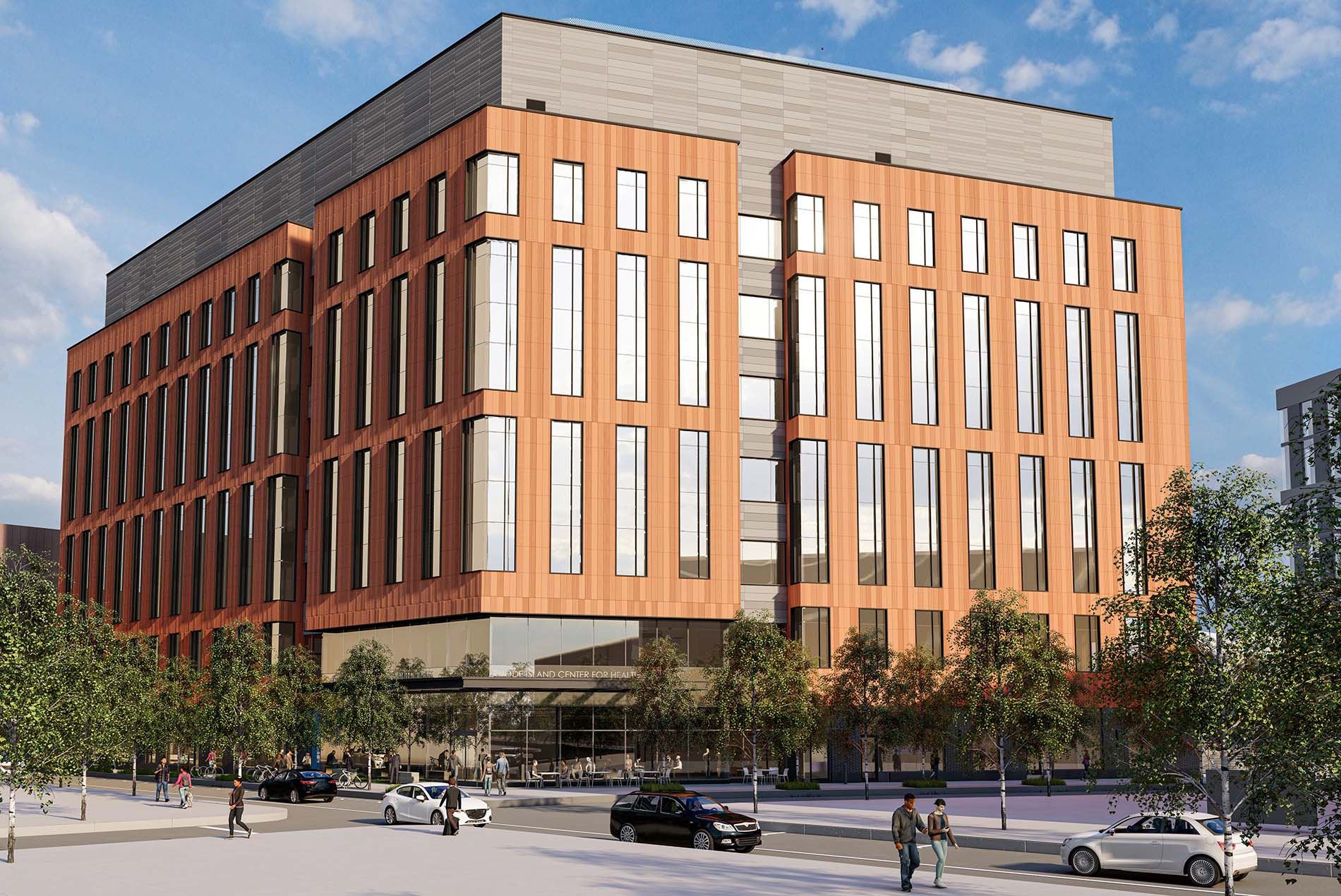
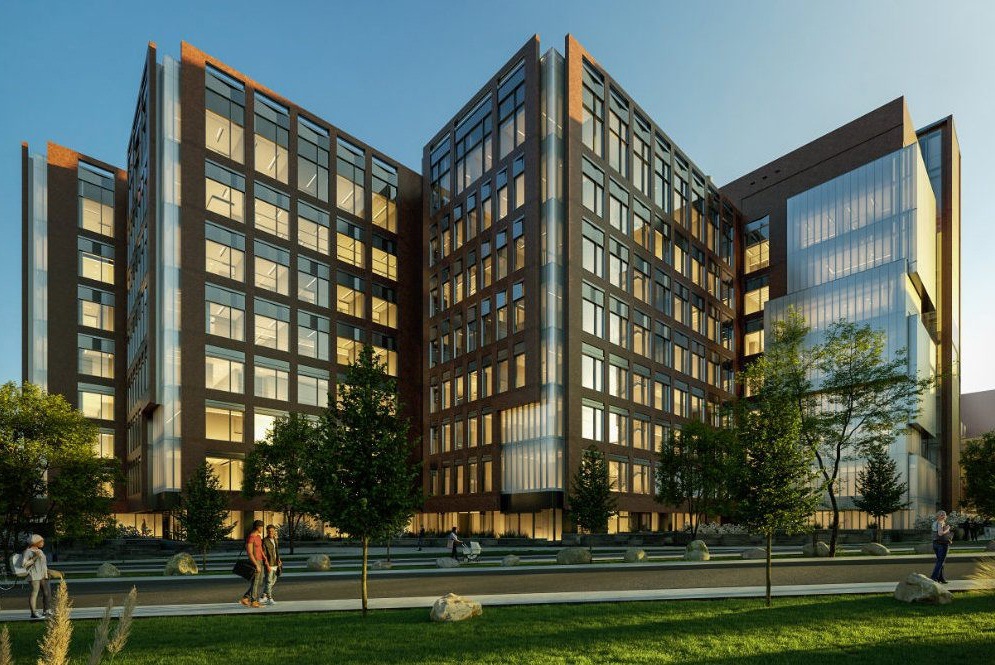
National Institutes of Health Surgery, Radiology and Lab Building
HOK is the design architect for the new Surgery, Radiology and Lab Medicine (SRLM) Building for the NIH in Bethesda, Maryland, which is projected to be completed by 2029. As the world’s largest biomedical agency, the NIH conducts and supports research on the causes, diagnosis, prevention and cure of human diseases. It sets standards and provides vital knowledge that informs the work of public safety labs. This new SRLM Building will house surgical suites, patient rooms, research labs, offices, conference areas and collaborative workspaces.
What to Think About When Designing Public Health Labs
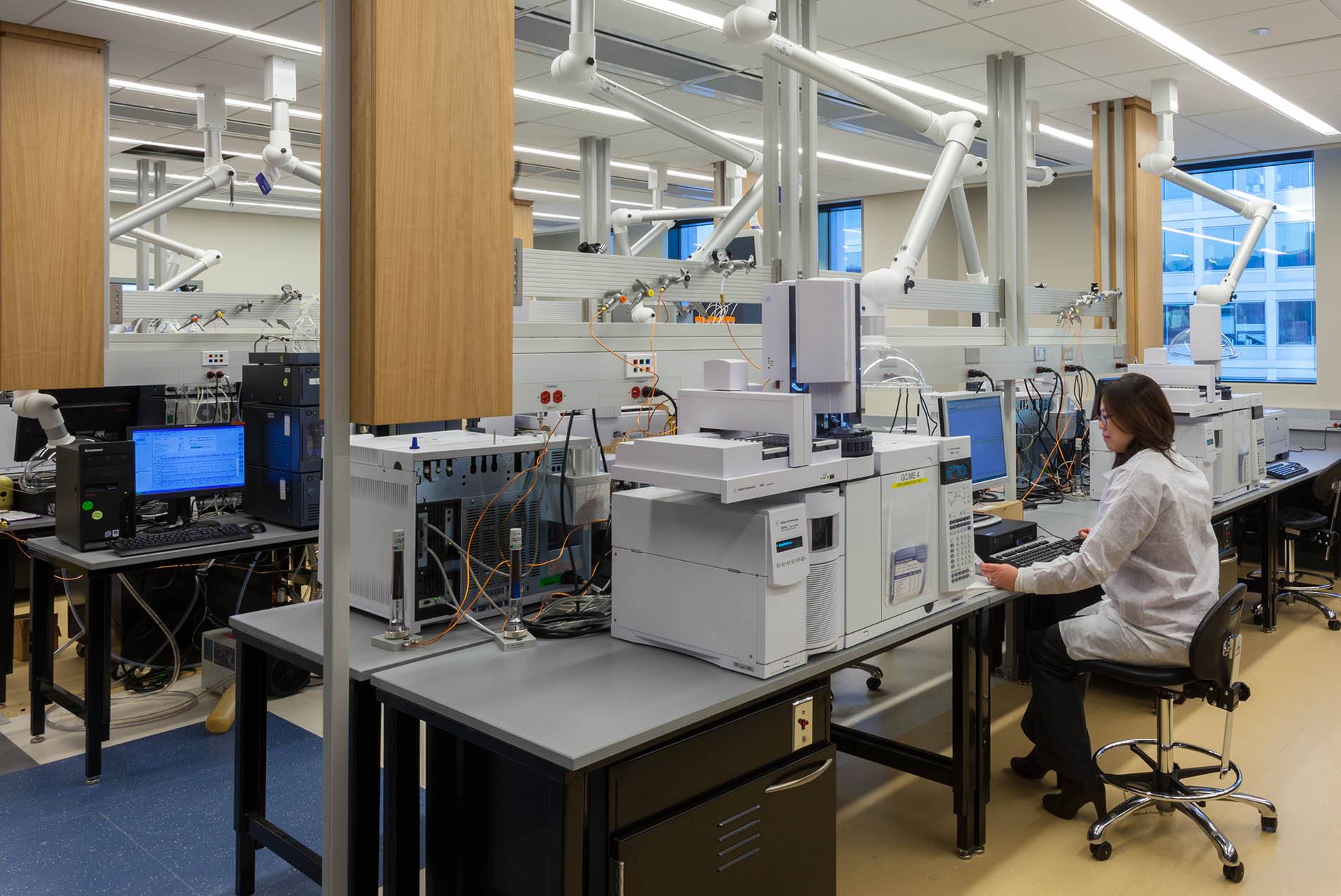
Here are six design trends that HOK’s teams are incorporating in our public health lab projects:
1. Adaptable Design
By nature, the work conducted in public health labs can change almost overnight. Creating labs that can be easily reconfigured gives researchers and technicians the adaptability they need to change them to accommodate different types of research, testing procedures and surges in demand.
At the 2024 Association of Public Health Laboratories (APHL) Annual Conference, this need for adaptability was a central theme. Discussions focused on how states and municipalities can expand their surveillance efforts to meet current threats. Wastewater analysis, for example, is becoming increasingly important for the early detection of public health threats, including COVID-19 and other pandemic agents, opioids and various harmful viruses and bacteria. To support this work, labs need building systems and benches that can flex and adjust to handle the increased sample flow required for this type of surveillance.
Given the unpredictability of global health trends, these facilities must easily accommodate future expansions, technological advancements and shifts in research focus. This includes incorporating infrastructure to support additional floors or extensions, as well as adaptable IT systems for evolving data management and scientific practices.
2. Technology Integration
An influx of automation equipment is transforming public health labs. Automated sample handlers, analyzers, robotic systems, and automated storage and retrieval systems require new space configurations. These labs also need more space to accommodate genome sequencing machines and digital tools for data management.
Integrating continuously changing new technologies requires careful planning and attention to detail from the outset of the design process. As automation becomes more cost-effective and ubiquitous, designers must accommodate a mix of benchtop and floor-mounted equipment.
The growing use of advanced genomic sequencing for pathogen identification, drug resistance testing and outbreak investigation presents brand new challenges and opportunities. To maximize the impact of these tools and ensure optimal throughput, public health labs must balance cost, space and staffing.
3. Safety First
The pandemic and persistent threat of bioterrorism have made safety and biocontainment paramount. Some of the safety precautions being implemented include using cutting-edge air filtration systems, incorporating biosafety level 3 (BSL-3) labs for handling dangerous pathogens and creating suites that minimize cross-contamination risks.
The demand for BSL-3 labs in public health labs is rising due to emerging concerns like new pathogens, antimicrobial resistance and the global movement of infectious diseases. Additionally, programs like the Select Agent and Toxin Program, which regulate the possession and use of biological agents and toxins that pose a severe threat to public health, require labs to have robust biosecurity measures. These labs need to be flexible to adapt to various situations, incorporating security protocols to secure specimens and mitigate risks.

4. Sustainability and Social Responsibility
Public health labs are prioritizing environmental sustainability for renovation and new construction projects. This includes the use of energy-efficient building materials and systems, the integration of renewable energy sources and the implementation of water-saving measures. There’s also a strong emphasis on maximizing natural light and improving indoor air quality through biophilic design elements. The NIH’s SRLM building, with its highly efficient mechanical systems and strategies for natural light, is well-positioned to earn LEED v4 Gold certification.
As more states aim to cut greenhouse gas emissions, decarbonization mandates for buildings are becoming increasingly common. Aligning with New York Governor Kathy Hochul’s Executive Order 22, the New York Public Health Laboratory’s design incorporates geothermal wells and air-cooled heat pumps to significantly reduce its energy consumption. HOK’s Science + Technology group is also exploring strategies for designing net zero carbon labs that will set a new standard.
Beyond these environmental considerations, we’re seeing a growing commitment to social responsibility in lab design. By incorporating green spaces that promote local biodiversity and engaging in health initiatives that benefit the surrounding neighborhood, modern public health labs are positively impacting both the environment and the communities they serve.
5. People-Centric Design
Public health labs face ongoing challenges with recruiting, developing staff and retaining employees.
No one wants to work in a building that feels like a bunker. Attracting and keeping talented people requires providing lab environments that are comfortable and inspiring while contributing to productivity. By incorporating inclusive design principles, designers can create spaces that are welcoming and accessible to all.
Key elements of inclusive lab design include:
- Amenities and ergonomic furniture that promote comfort and well-being.
- Natural light and biophilic design elements that bring the outdoors inside, boosting mood and productivity.
- Spaces that encourage collaboration, interaction and knowledge sharing.
- Transparency and open layouts that break down barriers and promote community.
For more insights on inclusive design for lab buildings, check out HOK’s detailed article here.
6. Resilience
The pandemic underscored the need for resilient labs that can quickly adapt to emergencies. This involves creating spaces for rapid response to health crises, incorporating enhanced biocontainment for high-risk pathogens and establishing infrastructure for effective remote work and data sharing.
Designers are placing a new emphasis on staff well-being, recognizing the intense demands of pandemic-like scenarios. This includes providing space for rest and relaxation, as well as adequate emergency supply storage.
It’s essential to achieve a balance between maintaining reliable systems and investing in redundant infrastructure to ensure uninterrupted 24/7 operation during crises.
Preparing for What’s Next
The pandemic exposed critical infrastructure gaps and limitations within our public health labs, even as it brought to light their vital role in safeguarding society. As these unsung heroes undergo upgrades, purpose-built, contemporary designs are essential to support their evolving mission.
Planning a new or upgraded public health lab facility? Contact:
David Schwartz, AIA, LEED AP, regional leader of Science + Technology in New York, at david.schwartz@hok.com
Daniel Niewoehner, AIA, regional leader of Science + Technology in Chicago, at daniel.niewoehner@hok.com
Top image credit: “State Public Health Laboratory in Exton Tests for COVID-19” by Governor Tom Wolf, is licensed under CC BY 2.0.
